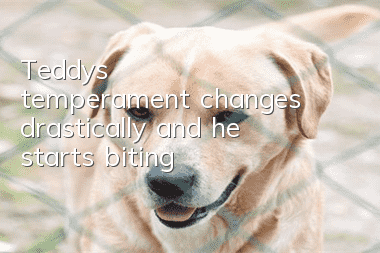What causes urinary incontinence in dogs? You need to know these reasons

First, neurological problems:
A normal bladder can hold a certain amount of urine. If it exceeds this amount, it will cause "urinary urge". At this time, there will be two sets of neural control mechanisms at the same time. Function: One part is the reflex of the sacral vertebra, triggering the continuous contraction of the detrusor muscle and starting urination; the other part is the cerebral cortex inhibiting the sacral vertebra reflex and causing the external sphincter and perineal muscles to contract. If you have a slight urge to urinate but cannot urinate, it means that the function of the cerebral cortex is stronger than the reflex of the sacral spine. Nervous causes are the main cause of urinary incontinence in most elderly cats and dogs.
Second, loss of bladder storage function:
When the bladder loses its normal urine storage function, or when the bladder contracts excessively, small amounts of urine will continue to leak out frequently. The causes include urinary tract infection, pelvic infection, chronic inflammation, tumors, stool obstruction, external pressure, bladder dysplasia, etc. It is not difficult to diagnose the storage function of the bladder, because there are often many other symptoms that need to be distinguished. Treatment is to eliminate the cause of bladder dysfunction and restore normal bladder function.
Third, urethral disorders:
The closure of the urethra is composed of smooth muscles, voluntary muscles, and connective tissues around the urethra to prevent urine from leaking out. If the urethra is not closed properly, urination will occur. Causes include urethral dysplasia, acquired urethral insufficiency, urinary tract infection or inflammation, prostate disease or prostate surgery. Urinary incontinence caused by urethral disorders and abnormal bladder storage function will occur intermittently. Less urine output is different from urinary incontinence caused by neurological reasons! If the problem is estrogen reduction, it can be improved by estrogen supplementation. Function of the urethra.
Fourth, structural issues:
Some congenital structural malformations, such as bladder exstrophy, open urachus, or ectopic opening of the ureter at the bladder neck, or acquired Damage (such as damage to the bladder and urethra structures during genitourinary surgery) may cause structural urinary incontinence. This type of problem can usually be learned from tissue inspection or medical history, and most treatments can only be solved by surgery.
Fifth, urine retention:
This problem results from the large amount of urine remaining in the bladder, mainly secondary to bladder neck obstruction, urethral stricture or nerve damage. In this type of urinary incontinence, urination will be difficult, the urine rheology is thin and weak, and water often drips at the end of urination.
The above five causes of urinary incontinence are introduced. Of course, other causes are not excluded. Urinary incontinence often occurs in combination rather than alone. Therefore, the owner should observe where the dog is uncomfortable so that it can be effectively treated and the veterinarian can prescribe the right medicine.
- How long does it take for a Bichon Frize to recognize its owner?
- Should two-month-old puppies take probiotics?
- Why does a dog keep having diarrhea?
- Dog won’t eat after vomiting
- What causes hair loss in Chihuahuas?
- What is the right temperature for a dog’s bath water?
- The dog’s eyes and mouth are swollen for no reason
- Why do dogs bite with their mouths instead of scratching with their hands when they fight?
- The dog is short of breath, has a rumbling stomach, and has no energy.
- How many kilograms can a Bichon bear grow at maximum?



